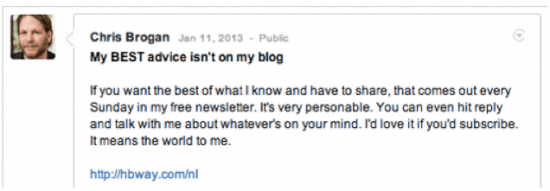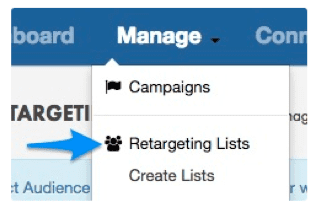Integrating your email and social media marketing opens the door to exploiting a wealth of data.
Integrating your email marketing audience with your social media audience should already be a game-plan-in-action within your marketing strategy. Using the rich data that comes from crossing these marketing channels however is often the post game oversight.
Email and social media are touch points your audience interacts with daily - channels you yourself have spent time on today. Social Media Examiner wrote what’s turned out to be an evergreen piece of content titled 9 Ways to Integrate Email and Social Media Marketing. This content lives on today because the fundamental relationship between emails and social media for the user remains the same, as do the benefits for marketing teams. Consider the amplification of your email message that social can provide, consider the data you can collect using email service provider platforms (ESPs) and how these insights can guide your social media strategy. Collecting a few new subscribers from social media and a few likes from email subscribers doesn’t hurt either. Let's look at how the two can work together and then of course we’ll address the “now what?” factor.
Email + Social Media = Bromance
Email marketing is alive and well, just check your Gmail promotions tab if you don’t believe me. The commercial emails that brands are sending out these days are more engaging, have more pizazz in their look and feel, not to mention killer-click-bait subject lines. Additionally, with the introduction of video features, marketing emails have more personality than ever before.
On a different channel, social media networks provide a dynamic landscape for interacting with your audience in new, fun and creative ways. They allow your brand to have more personality than what’s possible in emails alone.
That’s why marketers can get more audience for their investment by connecting email marketing efforts with social media marketing efforts.
Connecting email marketing to social media happens in two ways: sharing and connecting. You can either a) provide the option for your users to share your email or b) provide the option to like you or follow you on whatever social networks you subscribe to as a business. Of course there is also c) all of the above.
The Social Media Examiner blog post referred to above discusses including social calls-to-action within marketing emails as a way to connect the two. For example reminding your readers to like you on Facebook and then including the logo or a link to your Facebook page. Optimal integration of these two channels is a bit more complex than a few CTAs in your next marketing email however. Consider the following summarized framework/checklist from Web Marketing Today to effectively bridge the audience gap between email marketing and social media marketing:
Build it Right From the Ground Up
- Allow email and social media marketing teams to collaborate
- Create a segmented customer database per social platform
Create Pathways Between Email and Social Media
- Add social media sharing buttons to your emails
- Add social media connect icons to your emails
- Add social media icons to your “thanks for signing up” page or email
- Add social media icons to your unsubscribe emails
- Add email opt-in options to your social media pages
- Add subscribe prompts within your blog (considered social media)
- Create a Pinterest Board with screenshots of your emails
- Create contests with emails and leverage social media by giving participants additional entries for social engagement
- Leave “Tweet This” prompts in your marketing emails
- Prompt your social media followers to subscribe to your email newsletter like this guy:

Screenshot from Web Marketing Today
BufferApp reminds us to also upload our email subscribers lists onto our social media networks allowing us and our brands to appear in front of our subscribers on social media as well allow us marketers to be able to listen to them. I would add to the list above with the following:
- Promote all types of campaigns on emails and social media, not just newsletters and contests but also surveys, upcoming webinars etc.
- Create automatic publishing pathways between email marketing messages and social media
- Use an ESP that allows you to easily generate shortened URLs for posting on social media as well as personalized URLs for your subscribers.
My main message to our audience of email marketers is to be where your customers are.
So What Happens Next?
Ok the foundation has been laid for interacting and cross-marketing emails and social media messages. Now the real fun begins! Figure out what key messages and images are working in social media and try them out with emails and vice versa says Jay Baer in his Convince and Convert Slideshare post. He says you can bring fan stories from Facebook into the email, and vice versa you can use key messages from a marketing email as a status update on social media. I love this advice and way of thinking. The two channels are constantly interacting and shaping one another by uncovering ongoing insights. The data collected from connecting these two channels is a guiding light to your ongoing email and social marketing strategy. First let’s talk retargeting.
Retargeting
Now that you know who has clicked through from your email to social media, you can retarget them! Ads on social media are expensive so why not send a more personal message to a dedicated list of interested audience members? BufferApp shows us how to use our list of users who clicked through to social media in order to target them using dedicated ads in Facebook and Twitter here.

Screenshot from BufferApp
Exclusivity
BufferApp also writes about the reward of exclusivity that can be used to further engage subscribers. By creating exclusive groups for our email subscribers in LinkedIn or Facebook for example, we give them a sense of exclusivity, privilege and reward them for their loyalty. We also get a chance to have again a more personal conversation and connection with audience members we can define as already-interested.
Personalization
Personalization is a way to offer improved interaction with your brand to your user, based on an understanding of their current web behaviour and your analysis and interpretation that you’ve gathered. Similar to the point about retargeting, personalization is driving content that is more relevant and contextual to the individual than your typical e-blast. The only way to learn more about your user, to be able to retarget them or to create more personalized correspondence for them, is by interacting and learning more about the individual. The data collected about an individual over time is stored in a database and should then be fed back into future marketing campaigns so the audience experience is one that becomes increasingly personalized the more they engage with a brand.
Using a dedicated email service provider like Dialog Insight, you can gather invaluable data like open-rate statistics, click-through-rate, time spent on page etc and use this data to create segmented customer groups. The more personal your conversation is with a person, the more special they will feel and the more loyal they will become to your branded community.
Social Community
Jimmy Daly, the author of that seriously awesome BufferApp post referred to above, points out an interesting fact that gets underplayed in the marketer’s world: Social media keeps email marketing for us even when we’ve clocked out and shut down. The social tab in your gmail is dedicated entirely to emails delivered from the social media platforms you’re signed up to, making sure the communities of each are thriving at all times. Daly uses the LinkedIn social network to illustrate this example since the emails don’t appear to come from “LinkedIn” rather they appear to come from the LinkedIn Group to which you’ve subscribed. Giving the email a more personal feel and catering to an interest already established, makes the user more likely to open it:

Screenshot of an email from LinkedIn Groups
The example above shows an update from the Search Engine Land LinkedIn group that I am a part of. These types of social emails keep you updated on everything from groups you’ve joined in LinkedIn featured above, to what’s popular in your network on Twitter or who’s liked what in Facebook. As a marketer the social tab is some kind of miracle-worker, continuing to promote activity we’ve spearheaded as brands on social media after we’ve stopped paying attention to it or when we can’t tend to it
Thing is though, we cannot expect these social emails to do much for us if we haven’t spent any time creating and engaging with an active social community. If there are no updates or discussion in a LinkedIn Group you’ve created, there will be no updates sent about it for example. Community is the goal we should be aiming for in our cross-channel marketing efforts. Retargeting, Exclusivity and Personalization are all techniques and strategies applicable to growing a community, all making use of the loving relationship established between email and social media marketing.
Conclusion
Everyone is different and as a marketer you can’t always predict where the unique individuals that make up your brand audience will be. You can bet that most of your audience uses both email and social marketing however. Connecting the email and social media dots is the easy part. Taking that relationship to the next level by analyzing the data is what will separate your marketing strategy from your competitors. Cater to the individuals that make up your audience, retarget them, make them feel special, find out which platforms they prioritize and speak to them there. Cover your bases with engaging and consistent messages in your marketing emails and across social platforms and then blow them out of the water with well-timed and targeted campaigns built from data you created. If you build it, community will come.
The case for and the relationship between email marketing and social media is easy to make for marketers. Make sure you’re taking advantage of all the ways that email and social media can work together and then make sure you’re making use of the data that comes from this integration.

Thanks to
Pascale Guay for sharing their advice and opinions in this post. Pascale Guay is director of
Dialog Insight You can follow her on
Twitter or connect on
LinkedIn.





 Thanks to
Thanks to 



